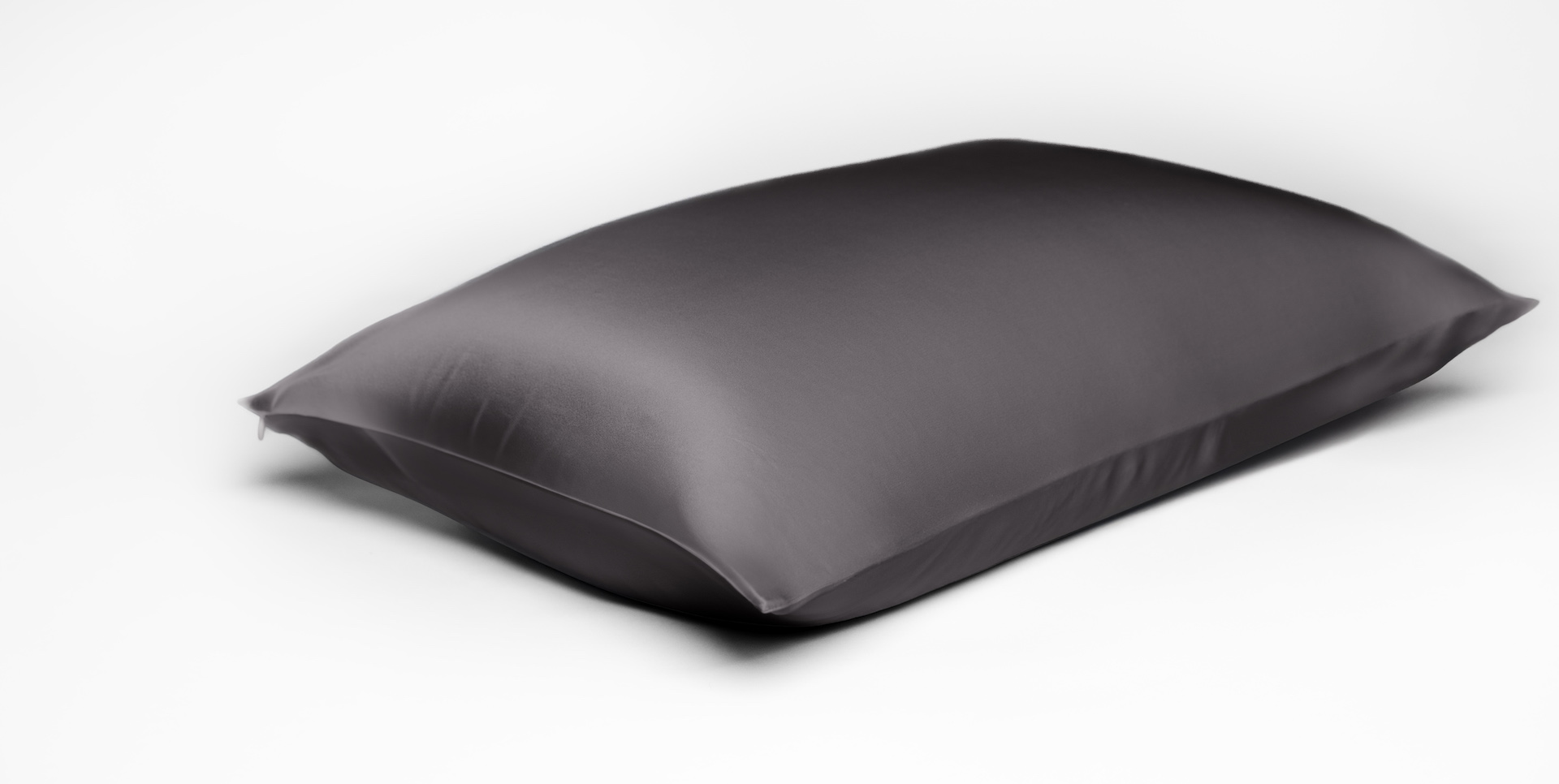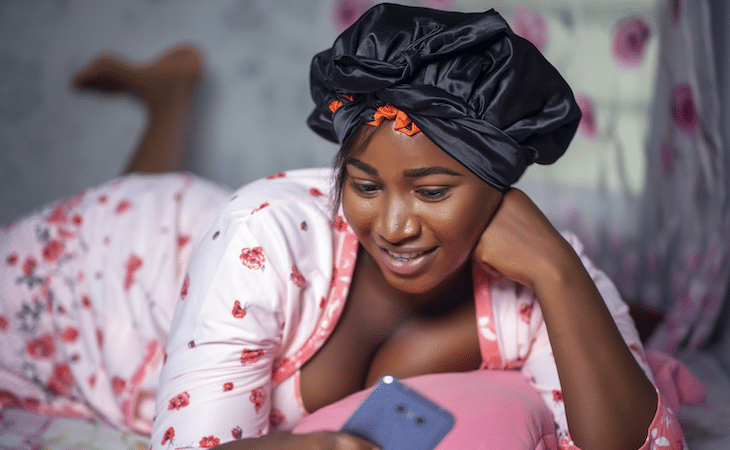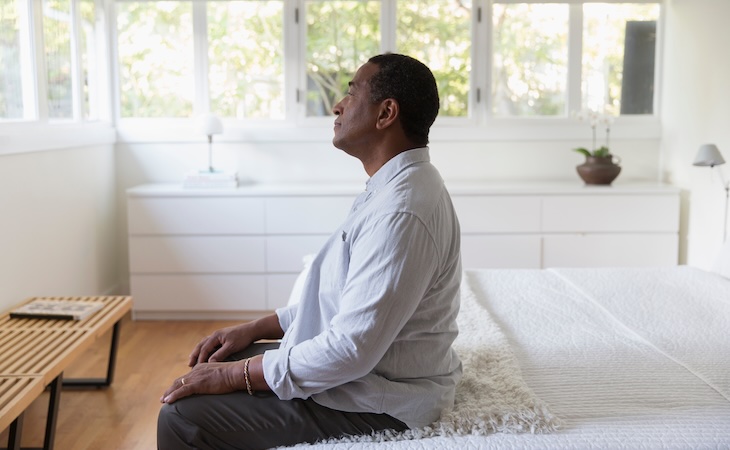I’ve seriously upgraded my sleep routine over the last few years. Now, I sleep with cooling, organic cotton sheets, got a pillow made specifically for side sleepers, upgraded my sound machine, and so much more. The only thing left on my list is to take care of my tresses—because no matter what, I always wake up with staticky, frizzy hair that takes way too long to deal with in the AM.
One of the best ways to keep your hair looking as good in the morning as it did when you went to bed is to sleep with a bonnet. Bonnets come in many different fabrics, but silk is definitely the most popular option.
If you’re looking to elevate your sleep routine from head to toe, we tapped hair stylist Leigh Hardges with Maxine Salon in Chicago to break down everything you need to know about sleeping with your hair in a bonnet.
What is a hair bonnet?
A hair bonnet is a total head coverage cap that’s typically made from satin or silk. According to Hardges, this is because “silk and satin do not absorb the natural oils from the hair and scalp.” That means any products you’re putting onto your hair before bed will be absorbed into the hair follicle—not into your pillow—as you sleep.
Benefits of sleeping in a bonnet
These are the top benefits of sleeping in a bonnet, according to Hardges.
1. Hair products remain in hair
As mentioned above, the moisture from any products you apply to the hair will be locked in.
2. Prevents dryness
If you deal with dry strands or even hair that’s dry on the ends and greasier at the roots, then wearing a bonnet to bed can help.
3. Increases longevity of a hairstyle
Whether you just got box braids, a perm, or a keratin treatment, sleeping with a bonnet is recommended by hairstylists to help keep your style in place as you sleep.
4. Prevents frizz and friction
As you sleep and move around on a cotton pillowcase, hair can break easily and become staticky and frizzy by morning. Sleeping with a bonnet helps to eliminate this.
How to wear a bonnet
Some bonnets have adjustable ties or elastic on the sides of them to make sure you sleep with the perfect fit. If you have an issue with your bonnet sliding around as you sleep, Hardges suggests adding “bobby pins on each side right above the ear to help keep the bonnet in place while sleeping.”
The best bonnets to sleep in
- Hairbrella: Hardges says this brand “does not move during sleep and is water resistant so it doubles as a shower cap.” If you live in a small space, then having this two-in-one combo can help save space in the bathroom.
- Pattern: If you have a larger hairstyle (or even a larger head like I do!), then Hardges recommends the bonnets from Pattern. They feature a “wide, comfortable band around the hairline and ears [and] the bonnet is big enough for long lengths and massive volume,” she says.
- Kitsch: Kitsch has a variety of silk sleep caps, bonnets, and other sleep accessories like sleep masks. You can even apply your favorite hair mask or deep conditioning overnight treatment to your strands before you put on your bonnet to help lock in moisture so the product works in overdrive. Just make sure to read the label of your product to ensure that it’s suitable for overnight wear and won’t burn your scalp or strands in the process.
Saatva also offers a

100% mulberry silk helps protect hair and skin while you sleep
to help protect your hair while you sleep.
FAQs
Is it good to sleep with a bonnet on?
Yes. According to Hardges, people with all hair types can benefit from sleeping with one to keep styles in place, reduce breakage, smooth frizz, and more.
Should I sleep in a satin bonnet?
It depends. If you see no issue with the way your hair looks when you wake up in the morning, then you probably don’t need a bonnet. If you’re noticing more breakage than usual, are adjusting to a new humid climate and experiencing frizz, or just want to keep a new hairstyle in place, then a silk or satin bonnet could be for you.
Should you go to sleep with wet hair? Learn whether sleeping on wet hair can mess with your mane.




